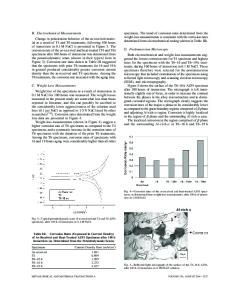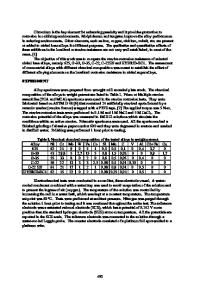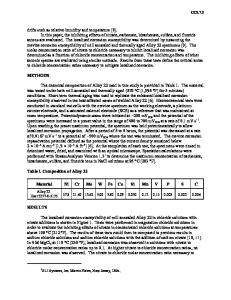Perspectives on Localized Corrosion in Thin Layers of Particulate
- PDF / 680,979 Bytes
- 12 Pages / 612 x 792 pts (letter) Page_size
- 40 Downloads / 332 Views
0985-NN08-01
Perspectives on Localized Corrosion in Thin Layers of Particulate Joe H. Payer1 and Robert G. Kelly2 1 Materials Science & Engineering, Case Western Reserve University, 10900 Euclid Ave., 404 White Bldg., Cleveland, OH, 44106 2 Materials Science & Engineering, University of Virginia, 116 Engineer's Way, Materials Science Building 323, PO Box 400745, Charlottesville, VA, 22904-4745
ABSTRACT The requirements for the initiation and propagation of localized corrosion are reviewed, and the stability criteria for sustained localized corrosion are discussed. A conceptual framework is applied to a specific scenario of a hot metal surface covered by a thin layer of particulate containing dissolvable salts in the presence of air of limited humidity. A number of processes are demonstrated to affect the crevice corrosion propagation, stifling and arrest. Contributions of the particulate layer properties, the anode, cathode and coupled processes are identified, showing that any of these can control localized corrosion propagation. Whether stifling or arrest occur will depend upon the material and environmental conditions for a given case. The findings add to the technical basis for the analysis of localized corrosion by a decision tree methodology. INTRODUCTION The vast majority of knowledge and data that are the foundation for corrosion science and engineering pertain to metals that are fully immersed in aqueous solutions. Certainly the extensive body of work on atmospheric corrosion is an exception; however, even there the emphasis is on general or uniform corrosion, and localized corrosion processes have been studied to a significantly lesser extent. In this paper, perspectives are presented for localized corrosion processes on metals covered by thin layers of particulate. The potentially corrosive environment is comprised of a single or multiple layers of particles, and the porosity in the layer can either be totally filled (saturated) or partially filled (unsaturated) with moisture. This scenario pertains to the analysis of the corrosion behavior of waste packages in the proposed Yucca Mountain repository during time periods when deliquescence of salts can result in the formation of concentrated brines in the particulate layer. Generally, crevice corrosion is considered to be an autocatalytic process, i.e. crevice corrosion and initiates when a critical chemistry is developed within the restricted geometry and chemical electrochemical processes result in a self-sustaining and self propagating condition. In this paper localized corrosion is described and processes that can lead to stifling arrest are identified. Whether stifling or arrest occur will depend upon the material and environmental conditions for a given case. Further, the analysis here is based upon a crevice corrosion process where the anodic dissolution within the crevice is coupled with cathodic processes outside of the crevice with no appreciable cathodic reactions within the crevice. This paper draws upon information presented at a corrosion wo
Data Loading...











